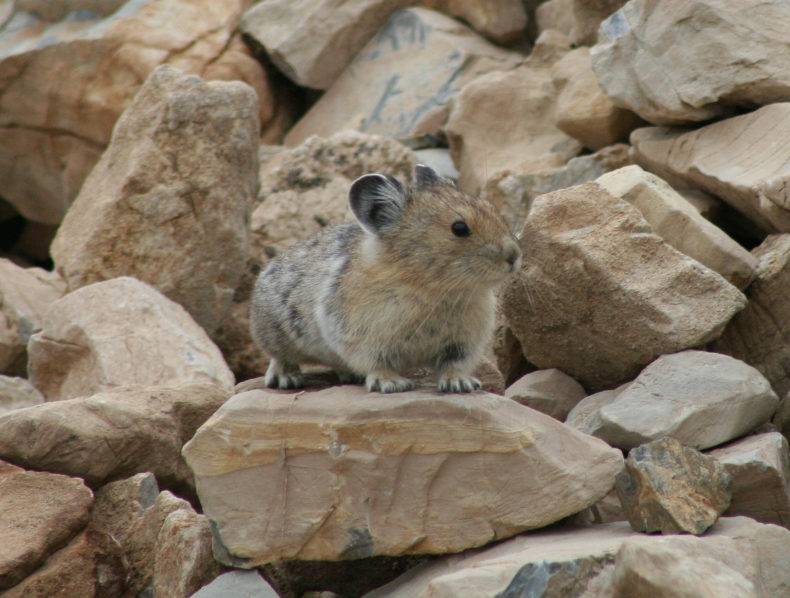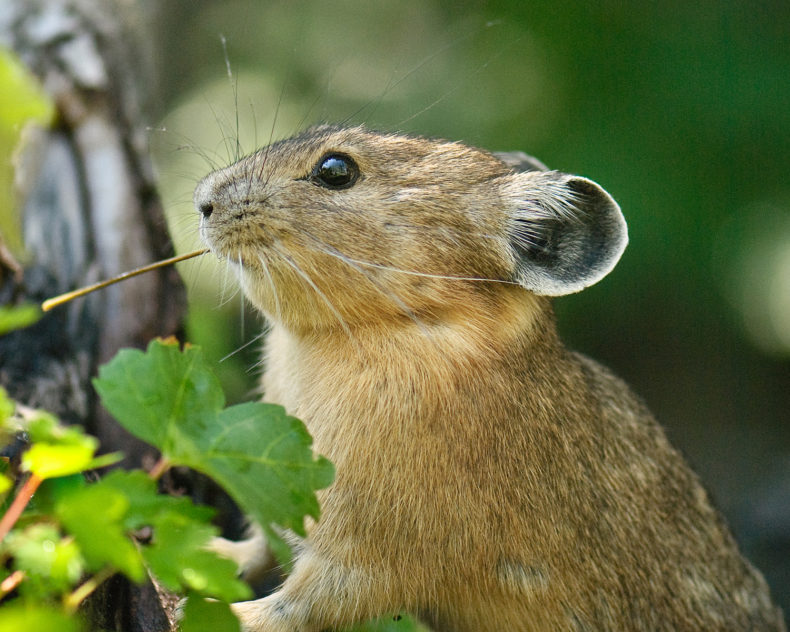
High above the place where you’re reading this, maybe many miles away or, if you’re lucky, just outside your door, there is a strange and dangerous realm. Few dare to venture there, and many who do are unprepared for what they’ll encounter. Even fewer live in this harsh realm, especially all the time. It is cold, even when it’s sunny, and it can be as dry as desert even when there’s consistent snow cover. It’s hard to breathe up there, because there is little oxygen, and because the wind will take the breath right out of you.
To reach the Realm, you have to climb, and usually for a long time. You can take a car part of the way but then at some point you just have to walk. There is no way forward except moving your own body through your own will through the forest and up, up.
Eventually, the trees grow shorter and scrubbier. This is the Krummholz zone. The trees change shape, turning from proud straight trunks to cowering, curved bushes. Some are so twisted they almost look wretched, like they have avoided something unspeakable. Nevertheless, they persist.
If you keep walking, there comes a point where even the Krummholz forest does not grow. Nothing remains but some soft cushion plants, which look like lumps of moss; some tiny flowering plants; a few hardy succulents; and rocks. Lots and lots of rocks.
In the Harsh Realm above treeline, which starts roughly between 11,000 and 11,500 feet in Colorado, you can feel—without trying too hard—that you are not on Earth. You are obviously above most of Earth, but it’s more than that; in the rocky surroundings of many mountains, you can feel detached from Earth entirely. I happen to love this feeling of mentally departing my rocky silicate planet and reaching a couple miles closer to space. I love having little evidence of any sentient life at all. But it can be jarring. It is also very lonely.
Nothing but tundra plants grow up there, and even then, their growth can be scraggly and sparse. Usually all you notice, all you have time and mental bandwidth to notice, are the rocks. They are often splotched with lichen, meaning there’s something living, but lichen is no forest. Plants are few and far between in the broken rocks, called talus, and they don’t really grow in the scree, which is looser, gravel-like stuff.
But if you’re fortunate and it’s been a sunny morning, you might catch a glimpse of an animal. The likeliest one you’ll encounter is a tiny tailless furball called a pika. Suddenly, you’re back on Earth. Their liquid eyes, koala ears, and hamster-like countenance bring you right back to the realm of the living, feet firmly planted on the planet of warm-bodied mammals.

Pikas collect grass and leaves all spring and summer, building caches that will keep them fed through the harsh alpine winter. Those winters are getting warmer and drier, as a changing global climate tweaks the typical seasonal cycles of the high mountains. Many ecologists worry that pikas, marmots, and other alpine species will suffer and be displaced as the climate warms. But one researcher, who has studied American pikas for 50 years—yes, a half century—believes the pikas will be all right. At least when it comes to climate change.
Like many tundra species, pikas have evolved some cold-weather survival tricks. They are feverishly warm-blooded, with an average body temperature of 104 F, and they have a thick layer of insulating fat topped with fur, which means they could overheat easily in warm environments. On a balmy summer day in the alpine tundra, they hide in the cool shaded rocks of the talus. Researcher Andrew Smith, an emeritus professor at Arizona State University, says he used to believe these traits would hurt them in a warming world.
But in 2017, he went looking for evidence of pika problems and came back with good news. Among 3,250 pika habitat sites, he and federal researchers found pikas on 2,378. They were missing from 774 sites that contained only old evidence of pika habitation, and they had vanished from 89 sites where they were previously spotted in 2005. To Smith, this was largely good news.
The empty and old sites had the same temperature and moisture ranges as the areas where the pikas still lived, he says. This suggests something other than the Harsh Realm was driving them out. Something like human activity.
Based on a review of dozens of pika studies, Smith concludes that pika populations appear to be just fine in their typical range—at least as far as the climate is concerned.
“Most species exhibit losses near the edges of their geographical ranges, simply because individual animals in those zones are living in conditions that are less than ideal for them,” he writes in a recent article. “This does not mean that they are going extinct.”
Like so many other problems, the pikas’ future predicament will be human-caused. But it may be for reasons that are more direct than climate change. Colorado’s high mountains, including its 54 peaks towering above 14,000 feet, are more highly trafficked than at any point in human history. People leave beer cans and poo and countless other types of trash, and they venture off Forest Service trails to get better Insta shots, damaging tundra communities and pika food in the process.
Trail management and conservation groups are trying to stem the tidal wave of damage, but hordes of young smiling hikers are hard to hold back. Pity the pikas not for climate change, then, but for all of the people clamoring to visit the Harsh Realm.
—
Photo credit:
Top: US National Park Service via Wikimedia Commons/CC-2.0
Middle: Flickr user Marshal Hedin via Wikimedia Commons/CC-BY-SA-2.0
Thanks for this. Krummholz, the Harsh Realm, and pikas all occur at lower altitudes near me in Washington’s Cascades. I hope the larger area of almost contiguous habitat and cooler temperatures will give them some protection from climate change.